Website Speed Optimization 2025: A Comprehensive Guide & Practical Tips

Discover the most effective website speed optimization techniques for 2025. Enhance user experience, improve SEO rankings, and increase conversions with this detailed guide.
Website Speed Optimization in 2025: A Comprehensive Guide

In the rapidly evolving digital landscape of 2025, website speed is no longer just an advantage but a critical necessity. Users increasingly expect fast and seamless experiences, and search engines like Google prioritize high-performance websites. This article provides a comprehensive guide on how to optimize your website speed, ensuring you stay ahead in the online race.
1. The Importance of Website Speed
Website speed directly impacts user experience and your SEO performance. A slow website can lead to:
- High bounce rates: Users are impatient and won't wait for a slow-loading website. They will leave and seek alternatives.
- Low time on page: If your website loads slowly, users won't have the chance to explore your content.
- Low page rankings: Google uses website speed as one of its ranking factors. A slow website can be penalized and drop in search results.
Conversely, a fast website offers the following benefits:
- Better user experience: Users are more satisfied and more likely to return to your website.
- Higher conversion rates: Users are more likely to take desired actions, such as making a purchase or signing up, when your website loads quickly.
- Higher page rankings: Google prioritizes high-speed websites, helping you improve visibility in search results.
2. Website Speed Measurement Tools
To begin optimizing your website speed, you need to measure your current performance. Here are some popular tools:
- Google PageSpeed Insights: Google's free tool provides detailed information about your website's performance on both mobile and desktop devices, along with improvement suggestions.
- GTmetrix: Another powerful tool offering detailed analysis of page load time, HTTP requests, and other factors affecting website speed.
- WebPageTest: Allows you to test website speed from different locations around the world, using different browsers and devices.
Use these tools to identify specific issues that are slowing down your website, such as large images, unoptimized code, or a slow server.
3. Image Optimization
Images are often the primary cause of website slowdowns. To optimize images, consider the following techniques:
- Use WebP and AVIF formats: These modern image formats offer better compression than JPEG and PNG, reducing file size without sacrificing image quality.
- Compress images: Use image compression tools to reduce the file size of images without significantly affecting image quality.
- Lazy loading: Only load images when they appear in the user's viewport. This helps reduce initial page load time.
4. Using a CDN (Content Delivery Network)
A CDN is a network of servers distributed worldwide. When a user accesses your website, the CDN delivers content from the server closest to their location, reducing latency and speeding up page load times.
5. Code Optimization
Unoptimized code can slow down your website. To optimize code, consider the following techniques:
- Minify CSS and JavaScript: Remove whitespace, comments, and unnecessary code from CSS and JavaScript files.
- Remove unnecessary code: Delete any code that is no longer used on your website.
- Utilize browser caching: Allow browsers to store static files, such as images and CSS, so they don't need to be reloaded each time a user visits your website.
6. Server Optimization
A slow server can be the primary cause of website slowdowns. To optimize the server, consider the following measures:
- Choose good hosting: Select a reputable hosting provider capable of delivering high performance.
- Use caching: Use server-side caching to store frequently accessed web pages, reducing the load on the server.
- Upgrade hardware: If your server is not powerful enough to handle traffic, consider upgrading the hardware.
7. Leveraging Browser Cache
Browser caching is a powerful tool for increasing website speed. By allowing the browser to store static files, you can significantly reduce page load times for users who revisit your website.
8. Prioritize Above-the-Fold Content
Focus on loading the content above the fold quickly - the content that users see immediately when they visit your website without scrolling down. This helps create a good initial impression and improves the user experience.
9. Optimizing for Mobile Devices
With the increasing number of users accessing websites on mobile devices, optimizing for mobile devices is crucial. Ensure your website has a responsive design, loads quickly on mobile devices, and is easy to use on small screens.
10. The Latest Trends in Website Speed Optimization in 2025
2025 sees the emergence of many new trends in website speed optimization, including:
- Using AI for automated optimization: AI tools can automatically analyze your website's performance and provide improvement suggestions, such as optimizing images, code, and server configuration.
- Optimizing for web 3.0: Web 3.0, or the decentralized web, presents new challenges and opportunities in website speed optimization.
- Serverless Functions: Using serverless functions helps to reduce the load on the server and increase website speed.
Practical Tip: Consider using a professional website design service like Vinawebapp.com in Da Nang, Vietnam. They have the experience and expertise to help you build a fast, efficient, and user-friendly website, while keeping up with the latest optimization trends. For example, they regularly use lazy loading techniques and image optimization on their projects.
Optimizing website speed is an ongoing process. Regularly monitor your website's performance and make necessary adjustments to ensure you always provide the best possible experience for your users.

